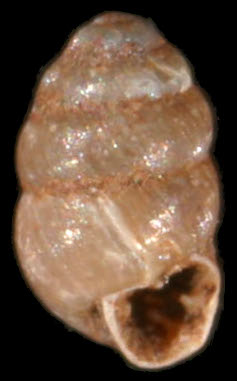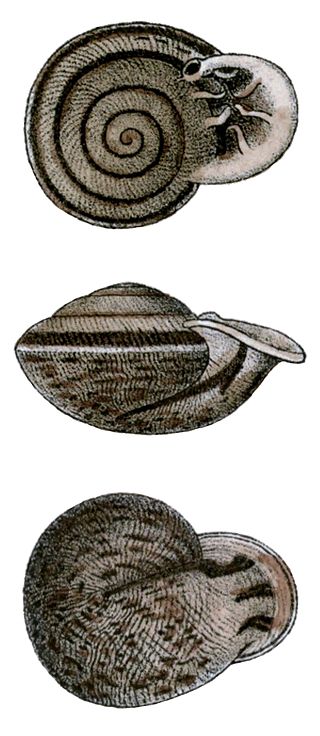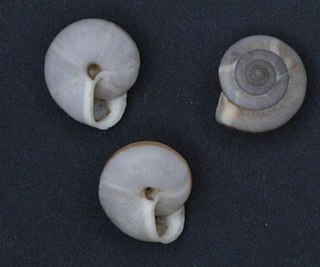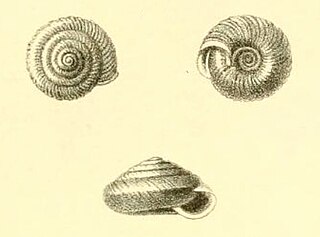
Helicoidea is a taxonomic superfamily of air-breathing land snails, terrestrial pulmonate gastropod mollusks in the clade Stylommatophora.

Elona quimperiana, common name the escargot de Quimper, is a species of air-breathing land snail, a terrestrial pulmonate gastropod mollusk in the family Elonidae.

Mandarina is a genus of air-breathing land snail, a terrestrial pulmonate gastropod mollusk in the family Camaenidae, subfamily Bradybaeninae.

Camaenidae is a family of air-breathing land snails, terrestrial pulmonate gastropod mollusks in the superfamily Helicoidea, the typical snails and their allies. This is one of the most diverse families in the clade Stylommatophora.

Vertigo pygmaea, common name the "crested vertigo", is a species of minute air-breathing land snail, a terrestrial pulmonate gastropod mollusk in the family Vertiginidae, the whorl snails.

Vertigo antivertigo is a species of minute air-breathing land snail, a terrestrial pulmonate gastropod mollusc or micromollusc in the family Vertiginidae, the whorl snails.

Elonidae is a family of air-breathing land snails, terrestrial pulmonate gastropods mollusks in the superfamily Helicoidea.

Ringicella ringens is a species of air-breathing land snail, a terrestrial pulmonate gastropod mollusk in the family Odontostomidae.

Sphincterochila baetica is a species of air-breathing land snail, a terrestrial pulmonate gastropod mollusk in the family Sphincterochilidae.

Sphincterochila candidissima is a species of air-breathing land snail, a terrestrial pulmonate gastropod mollusk in the family Sphincterochilidae.

Sphincterochila prophetarum is a species of air-breathing land snail, a terrestrial pulmonate gastropod mollusk in the family Sphincterochilidae.

Norelona pyrenaica is a species of air-breathing land snail, a terrestrial pulmonate gastropod mollusk in the family Elonidae.

Amphidromus flavus is a species of air-breathing land snail, a terrestrial pulmonate gastropod mollusc in the family Camaenidae.

Pommerhelix monacha is a species of air-breathing land snail, a terrestrial pulmonate gastropod mollusc in the family Camaenidae.

Aegista subchinensis is a species of air-breathing land snail, a terrestrial pulmonate gastropod mollusc in the family Camaenidae.

Pseudiberus is a genus of air-breathing land snails, terrestrial pulmonate gastropod mollusks in the family Bradybaenidae, inhabiting in Shandong, Henan, Hebei and Shanxi Provinces. PlatypetasusPilsbry, 1894 was previously considered as synonyms of Pseudiberus, however Zhang et al. (2024) corrected it via phylogenetics based on morphology and molecules.

Cathaica is a genus of small, air-breathing land snails, or terrestrial molluscs in the subfamily Bradybaeninae of the family Camaenidae. Cathaica pyrrhozona is the type species of this genus.

Cathaica pyrrhozona is a species of air-breathing land snail, a terrestrial pulmonate gastropod mollusk in the family Camaenidae, which is similar to Cathaica fasciola on shell morphology. But this species has single proximal accessory sac instead of two.

Aegista gottschei is a species of air-breathing land snails, a terrestrial pulmonate gastropod in the family Camaenidae.

















